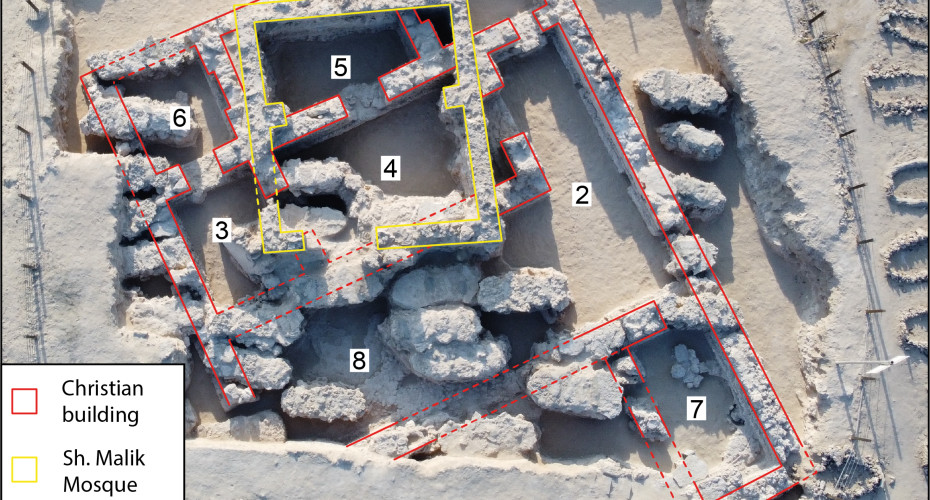Archaeologists have unearthed one of the oldest Christian buildings in the Arabian Gulf region, the first physical evidence of a long-lost community.
Although Christianity is not commonly associated with the Gulf countries today, the Eastern Church, also known as the Nestorian Church, thrived in the Gulf states until the establishment of Islam in 610 AD and the beginning of large-scale conversion to Islam.
Radiocarbon dating shows that the building in Samahij, Bahrain, was occupied between the mid-4th and mid-8th centuries, but was abandoned after its inhabitants converted to Islam.
Excavations by British and Bahraini archaeologists beneath the mound in the village’s cemetery uncovered a large building with eight rooms, including a kitchen, a refectory or dining room, a possible workroom, and three living rooms. The building only survives because a mosque was later built on top of it.
The building may have been the palace of the bishop of the diocese to which Samahij belonged, and is called Meshemahig or Mashmahig in historical sources, a corrupted version of “Samahij”. Records indicate that Meshemahig did not always have a smooth relationship with the central ecclesiastical authorities: in 410 its bishop was excommunicated, and in the mid-7th century another bishop was accused of challenging the unity of the church.
Until now, the few Christian buildings scattered across the Gulf — churches, monasteries and homes — have been found in small, remote locations in Iran, Kuwait, the United Arab Emirates and eastern Saudi Arabia, and most of them date back to later times. Samahij is different in that it is at the center of a modern settlement.
The building was very well built, with stone walls, plastered interiors and plastered floors: sockets and holes show where doors and benches had been fixed inside, and the kitchen contained several hearths made from the bottoms or tops of amphorae like storage containers.
The population maintained a good standard of living and consumed pork, fish, shellfish and a variety of crops that had been discontinued after their conversion to Islam, all of which are currently being analysed.
The discovery of numerous semi-precious carnelian beads and pottery fragments of Indian origin suggests that they were involved in trade, especially with India.
The community also used glassware, such as small wine glasses, but this practice fell out of use during the Islamic period. Archaeologists have uncovered 12 copper coins, which suggest that they used coins minted during the Sassanid period.
Spindle wheels and copper needles were found inside the building, which suggests that textiles for religious services may have been produced here.
That the inhabitants were Christian is indicated by three plaster crosses found there (two that decorated buildings and one that was likely carried or kept as a personal keepsake) and graffiti inscribed in plaster, including what appear to be the early Christian symbols of Kai Lho and a fish.
The building was excavated between 2019 and 2023 as part of a project co-led by Professor Timothy Insol from the University of Exeter’s Arab and Islamic Studies Institute and Dr Salman Al Mahari from the Bahrain Culture and Antiquities Authority.
Professor Tim Insol said: “We were also amused to discover that someone had painted part of a face in bitumen onto a mother-of-pearl shell, presumably for a child who lived in the building.”
“This is the first physical evidence of a Nestorian church discovered in Bahrain and gives us fascinating insights into how people lived, worked and worshiped.”
A museum to preserve and display this incredible ruin is currently being built at the site, due to open in 2025.

